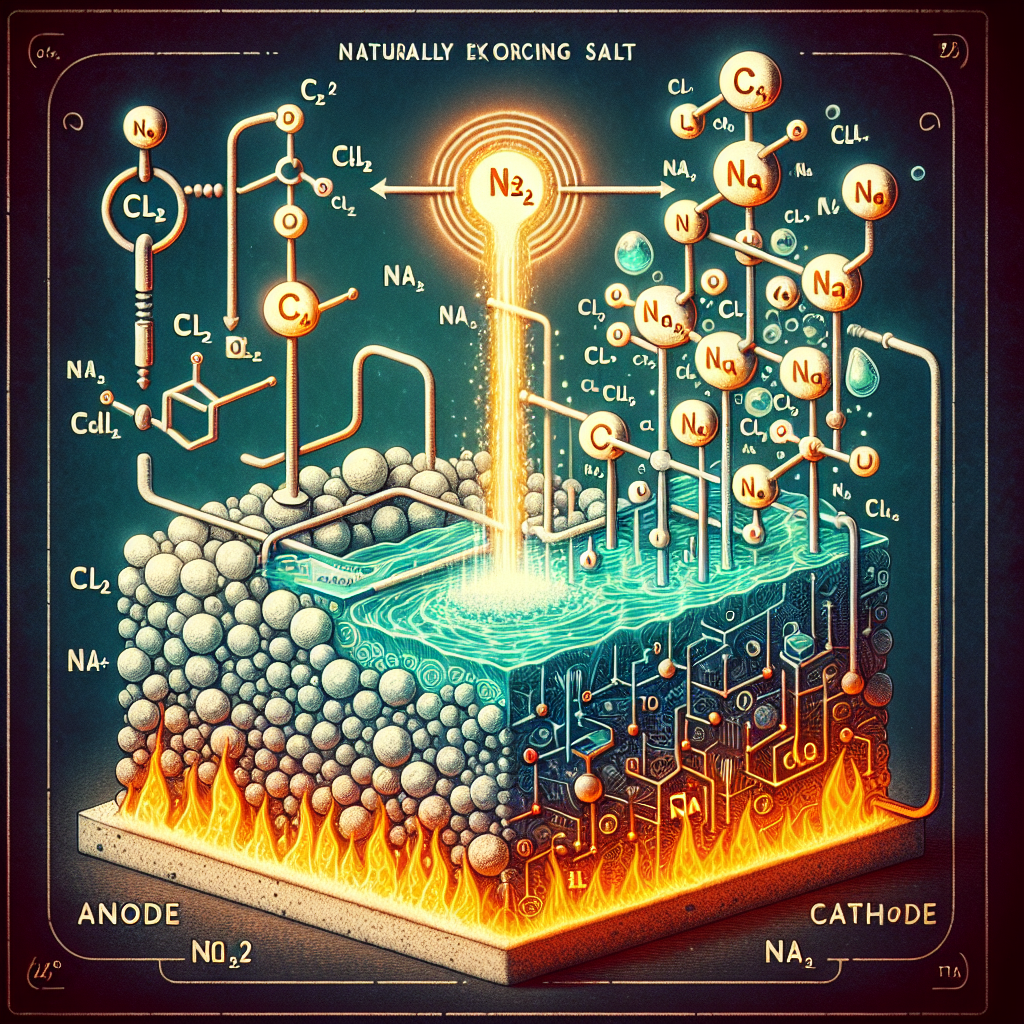
Sodium can be extracted by heating naturally occurring salt until it is molten. An electrochemical process is then used to extract the sodium. Cl2 is produced at the anode, and Na is collected at the cathode.
1. Write the half-reactions that occur at the anode and the cathode. Identify each as either oxidation or reduction. (4 points)
I have written the half-reactions as:
2Cl-(aq)---> Cl2 (g) + 2e- oxidation
Na+(aq) + e- ---> Na(s) reduction
2. Based on these half-reactions, write the correct potential levels.
I got that the potential level for Cl oxidizing was +1.36
And the potential level for Na reducing is -2.71
But I have also learned that the reduction half-reaction should have a more positive cell potential so I'm confused...did I do something wrong?
I don't know how you're defining the term potential level. The potential to oxidize Cl ion to Cl2 gas is -1.36 v and that for Na ion to Na metal is -2.71 v. The potential of the cell is -1.36 + (-2.71) = -4.07 v. Therefore, you need at least +4.07 v to electrolyzs molten NaCl. In practice you will need a larger voltage. I don't know why Na electrode should be higher; actually both should be a little higher due to the over voltage (also known as over potential) at the electrodes.
Why did you add the potentials rather than subtract?
Hey there! It looks like you're having a bit of confusion about the potential levels of the half-reactions in the sodium extraction process.
Although you're right about the oxidation half-reaction of chloride ions to chlorine gas having a potential level of +1.36, the reduction half-reaction of sodium ions to solid sodium should actually have a more negative potential. In this case, the reduction potential for sodium is -2.71.
So, to clarify:
Anode (oxidation):
2Cl-(aq) ---> Cl2(g) + 2e-
Potential level: +1.36 (oxidation)
Cathode (reduction):
Na+(aq) + e- ---> Na(s)
Potential level: -2.71 (reduction)
In electrochemical processes, the half-reaction with the more positive potential level occurs at the cathode, while the half-reaction with the more negative potential level occurs at the anode.
Hope that clears things up for you!
Your calculations for the half-reactions and the potentials are correct. The confusion arises because you are comparing the reduction half-reaction potential to the oxidation half-reaction potential.
In an electrochemical cell, the overall cell potential is determined by the difference in potentials between the two half-reactions. Since the half-reaction with the higher potential tends to occur as reduction (gaining electrons), the more positive the potential of the reduction half-reaction, the higher the overall cell potential.
In this case, the reduction half-reaction of Na+ to Na(s) has a more negative potential (-2.71 V) compared to the oxidation half-reaction of 2Cl-(aq) to Cl2(g) (+1.36 V). This means that Cl2(g) is easier to reduce (occurs at lower potential) compared to the reduction of Na+ to Na(s). Therefore, the reduction of Na+ is favored at the cathode, and Cl2 is produced at the anode.
So, you did not do anything wrong. The reduction half-reaction can have a more negative potential as long as the overall cell potential (the difference between the two potentials) is positive.
No, you have not done anything wrong. The reduction half-reaction indeed should have a more positive cell potential. However, it seems that you have incorrectly calculated the potentials for the half-reactions.
To calculate the potential levels for the half-reactions, you need to consult a table of standard reduction potentials. These values represent the tendency for a species to gain electrons (reduction) under standard conditions.
The half-reaction for the oxidation of chloride ions (Cl-) to chlorine gas (Cl2) is as follows:
2Cl-(aq) ---> Cl2(g) + 2e- (oxidation)
The reduction potential for this half-reaction is listed as +1.36 volts in the standard reduction potential table.
The half-reaction for the reduction of sodium ions (Na+) to solid sodium (Na) is as follows:
Na+(aq) + e- ---> Na(s) (reduction)
The reduction potential for this half-reaction is listed as -2.71 volts in the standard reduction potential table.
Now, to calculate the overall cell potential, you need to subtract the reduction potential of the anode (oxidation half-reaction) from the reduction potential of the cathode (reduction half-reaction):
Cell potential = Reduction potential of cathode - Reduction potential of anode
Cell potential = (-2.71 V) - (+1.36 V)
Cell potential = -4.07 V
Note that the negative sign indicates that the overall reaction is not spontaneous under standard conditions.
So, to summarize, the correct potential level for the oxidation of Cl- is +1.36 V, and the correct potential level for the reduction of Na+ is -2.71 V. The negative cell potential indicates that this electrochemical process would not occur spontaneously.